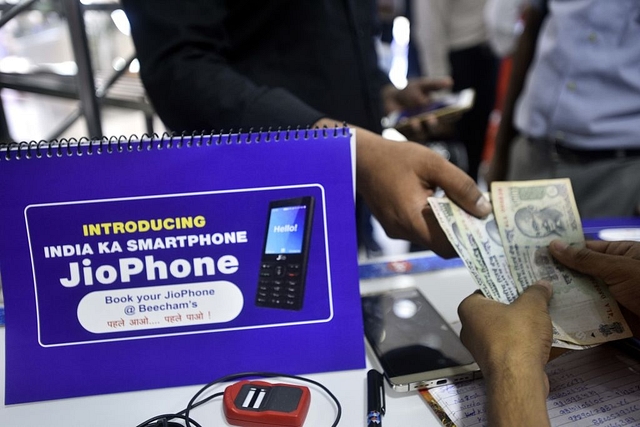
Despite Four Major Exits, Telecom Is Still An Unstable Triopoly, Thanks To Jio
Jio will continue to wage a war for more market share by keeping tariffs low. The telecom disruption isn’t over yet, for Jio is not aiming for number three.
The rapid consolidation in the telecom industry, where four major players exited over the last six months (Reliance Communications, Tata Tele, Telenor and Aircel), is not bringing stability to the industry. The remaining field of three big private players (plus one government player) is in a state of unstable equilibrium.
As at the end of December 2017, subscriber data from the Telecom Regulatory Authority of India shows the following rankings: Airtel (290 million subscribers), Vodafone (213 million), Idea (196 million), Reliance Jio (160 million), and BSNL (108 million). Once Vodafone and Idea merge, it will have at least 409 million users, making it number one. But, if we assume that the bulk of the subscribers of Tata Tele and Telenor will migrate to Airtel after the acquisition of these outfits by the latter, Airtel could have 367 million users, making it number two.
Aircel’s 84 million users will be fleeing to the other players following the firm’s decision to file for bankruptcy, but assuming the porting is roughly equal to all the three major players, there will not be much change in the pecking order.
This means Reliance Jio will remain the disrupter. Reason: Mukesh Ambani did not enter the industry to be number three. It will continue to wage a war for market share by keeping tariffs low. In a presentation made to analysts some months ago, the company said that its superior technology and IP (internet protocol)-based network makes it “well-positioned to achieve more than 50 per cent revenue market share”.
One has to wait and see if this is achievable, but the presentation based its assumptions on a few major trends: one, the market is shifting from voice to data, and the data market will be worth Rs 3 lakh crore by 2020-21; some 400 million subscribers can afford to pay Rs 500 a month for digital services; and the Jio network can support 60 per cent of projected demand for data by 2020-21.
Clearly, the market dynamics will change again, as all players shift investments towards data, and 4G VoLTE (voice over long-term evolution). While Jio’s rivals have to make big investments to accommodate this shift in demand towards data, Jio is already there, and is also ready for 5G, when it comes.
Three things will change in future.
First, subscriber numbers will matter less than ARPUs – average revenues per user. Jio may not easily find millions of subscribers willing to pay Rs 500 a month (not yet), but it surely can find 200-300 million willing to pay upto Rs 200 per month in the near future. Its monthly ARPU, according to a report in Business Standard, was Rs 153 in the December 2017 quarter, against Airtel’s Rs 123 and Idea’s Rs 114. If another price war breaks out, these ARPUs could fall. This means the industry will remain unstable in the foreseeable future.
Second, by implication, the market warfare will be about revenue market share. In the December quarter, Jio overtook Idea as number three in terms of revenue market share, reporting revenues of Rs 6,880 crore (versus Idea’s Rs 6,510 crore and Airtel’s Rs 10,750 crore). Of course, once Idea merges with Vodafone, this may not matter, but Jio will remain number three in terms of revenue market share – and a rising share.
Third, the shift to data means all players will have to increase investments in building networks to support data growth. Jio has probably done the bulk of its investments in cable and fibre; it is the others who will have to make greater investments in future. Their balance-sheets will continue to bleed red in the foreseeable future.
The telecom disruption isn’t over yet, for Jio is not aiming for number three.